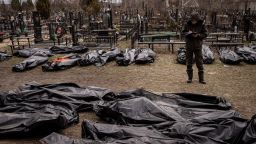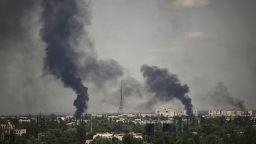The fate of the Ukrainian city of Mariupol is hanging on an unknown number of defenders making their last stand at an iron and steel plant.
An ultimatum given by the Russian Defense Ministry to the last remaining Ukrainian troops still fighting in the port city has come and gone. The battle continues.
Heavy fighting was still going on in Mariupol on Monday, according to Petro Andriushchenko, an adviser to the city’s mayor.
He said Russian forces had begun issuing passes for movement within the city and that they announced entry and exit routes would be closed on Monday, warning that men remaining in the city would be “filtered out.”
That claim could not be independently verified, but Andriushchenko and other Ukrainian officials said Russian forces were bombarding the Azovstal plant, one of the city’s last bastions still under Ukrainian control. The Russian military claims they have blockaded Ukrainian forces there.
Myhailo Vershynin, chief of the Mariupol patrol police, told CNN the defenders inside are “ready for fierce resistance.”
“They are aware what their fate may be, but no one is going to give up. Yesterday (the Russians) offered us a ‘corridor,’ they wanted us to leave without weapons, through the filtration points and then surrender,” he told CNN in voice and text messages.
“Nobody agreed to this. No one will leave without a weapon,” he added.
‘Hell on earth’
The Azovstal iron and steel works is a sprawling industrial complex in the southestern corner of Mariupol. The compound spans an area of more than four square miles and used to employ more than 10,000 people. It is unclear how many Ukrainian troops are still holding out in the plant.
Vershynin said that an estimated 1,000 civilians, including women, children and the elderly, were sheltering inside the plant.
“They have established their life there, provided themselves with food and water,” he said. “These people did not want and still do not want to go out. … they were aware they had more chances to stay alive here.”
The Commander of the Azov regiment, one of the units defending the city, said Russian forces were firing on the plant “willingly” as hundreds of people were sheltering inside.
“Russian occupational forces and their proxy from Luhansk People’s Republic/Donetsk People’s Republics know about civilians and keep their fire on the factory willingly. They use free-fall bombs, rockets, bunker-buster bombs, and all varieties of artillery, both ground and naval, for indiscriminate attacks,” Lt. Col. Denys Prokopenko said on Telegram.
The commander of the Ukrainian Marine unit in the city said Mariupol was “what hell on earth looks like.”
“At the [Azovstal] plant, women with children and babies live in bunkers. In hunger and cold. Every day being targeted by the enemy aviation. The wounded die every day because there is no medicine, no water, no food,” Maj. Serhii Volyna, commander of the 36th Separate Marine Brigade, said in an open letter addressed to Pope Francis and published on the Ukrainska Pravda website on Monday.
“The time has come when praying is not enough,” he added. The Pope has denounced the war and called for peace in his Easter Blessing on Sunday.
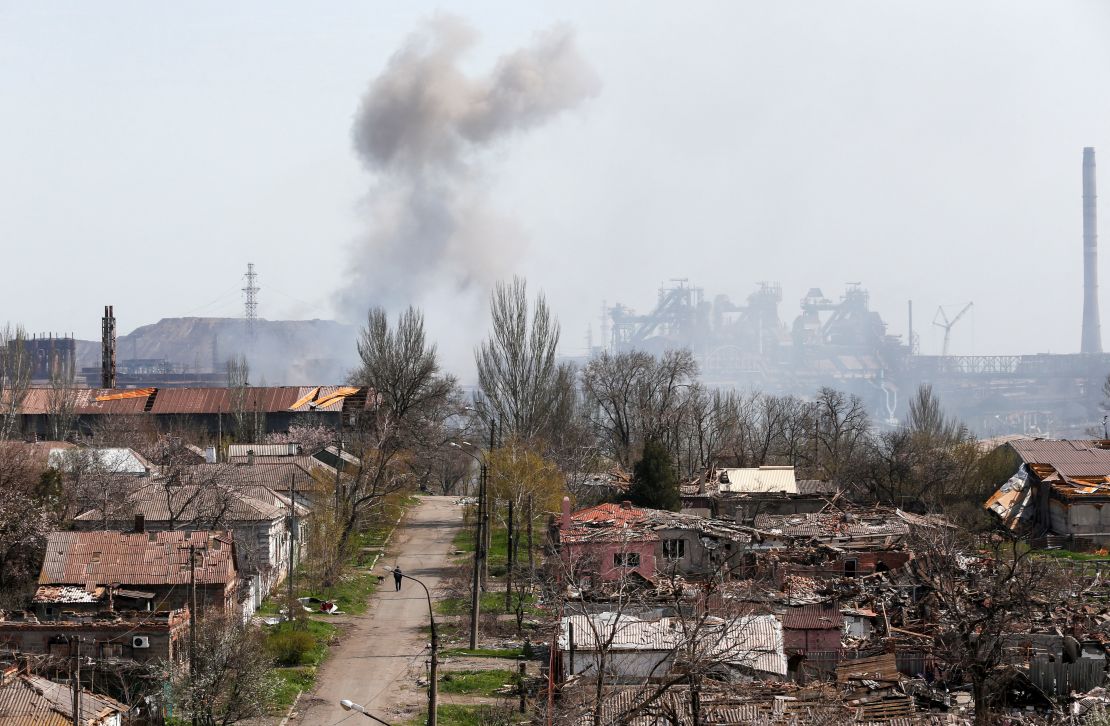
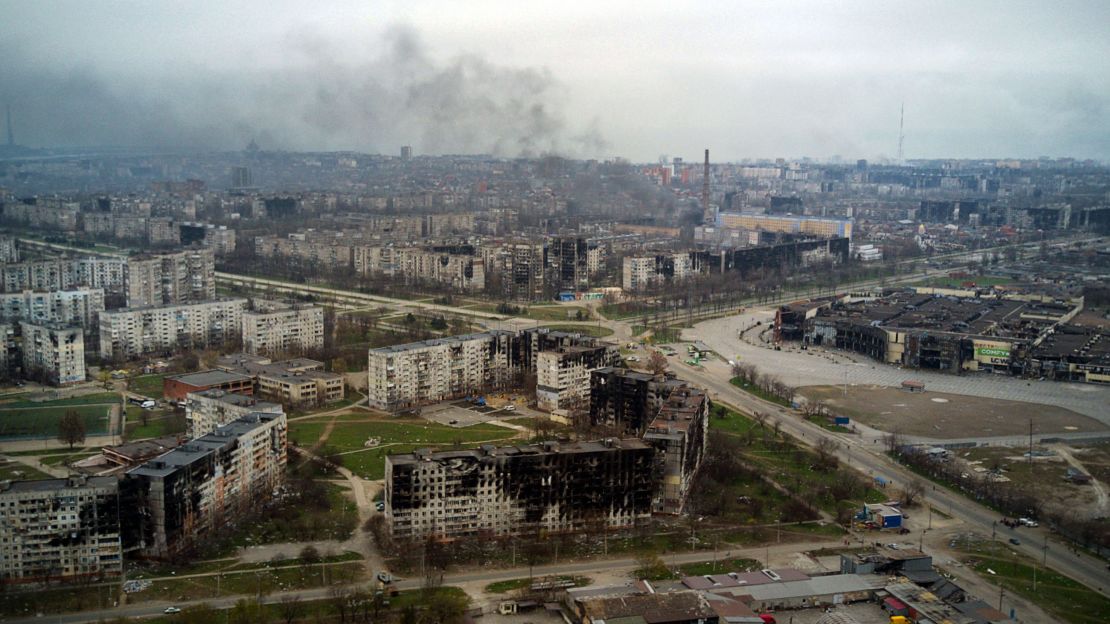
Retired Lt. General and CNN military analyst Mark Hertling said Mariupol was a critical logistics hub. Its strategic position on the the coast of the Sea of Azov makes it a key target. Taking it would allow Russia to create a continuous land bridge from Donbas to Crimea, the peninsula it illegally annexed in 2014.
“It not only has roads, but it also has railroads and it has ports,” Hertling said. “It has roads going in every single direction, that road to the east goes to Rostov on Don inside of Russia, the roads to the north and northeast go to Luhansk and Donetsk, the roads to the northwest go to Zaporizhzhia and the roads to the south go down to the port city of Berdyansk.
“This next phase of the war is going to be a fight for logistics. So Mariupol is a critically important city in the eastern region it’s the one they’ve all been fighting. Both sides have been fighting on what to control the roads, the other to prevent the control of the road when you go to the north.”
Ukrainian President Volodymyr Zelensky called the situation in Mariupol “inhumane” and said Russia was “trying to destroy everyone who is there in Mariupol.”
Speaking to CNN last week, he said nobody knows how many civilians have died in Mariupol. “Several thousand, tens of thousands, were forced to evacuate in the direction of the Russia Federation and we don’t know where they are, they’ve left no document trail,” Zelensky said.
As fighting continued in Mariupol, it has also intensified in other parts of the country. Ukrainian officials in the Kharkiv and Luhansk regions reported heavy bombardments by Russian forces Monday, acknowledging a retreat from one important town but claiming to have successfully repulsed Russian attacks elsewhere.
Meanwhile, the western city of Lviv, seen as a safe haven due to its proximity to the border, also came under attack on Monday. Maksym Kozytskyy, the Lviv regional military governor, said three missile strikes hit military warehouses that were not being used by the armed forces, and a fourth hit a tire-repair shop. Seven people have died, he said.
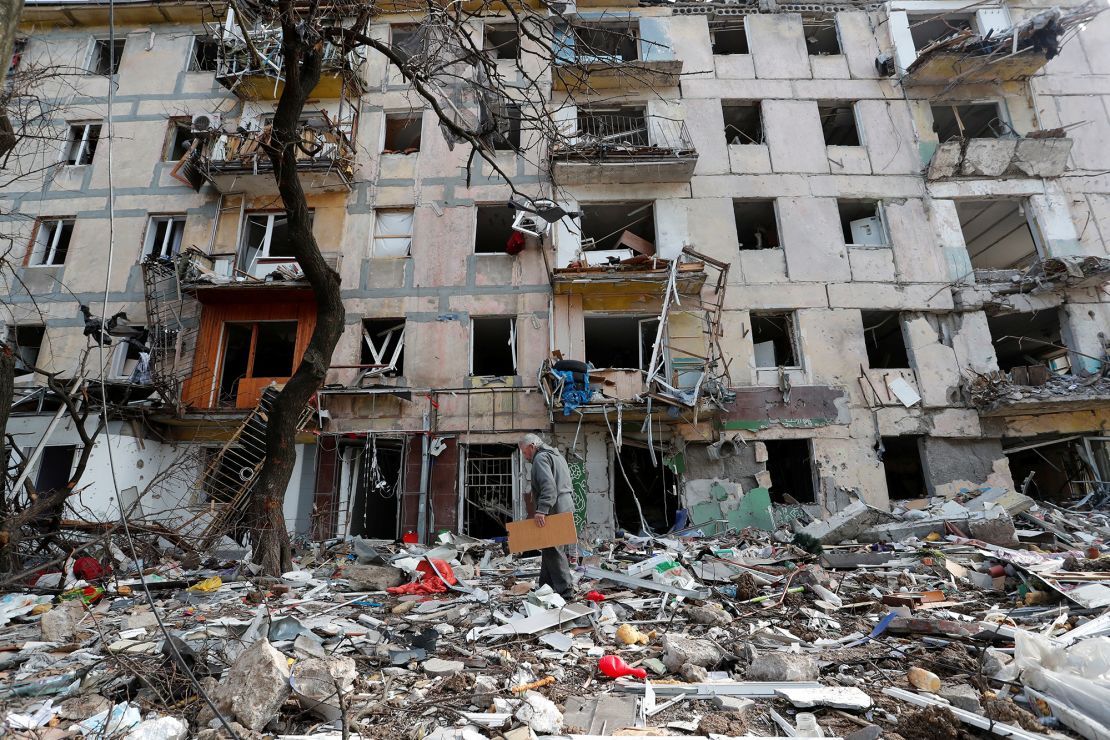
Strategic city, nearly gone
Mariupol has become the symbol of the terrifying brutality of Russia’s unprovoked assault on Ukraine. But it is also a symbol of the fierce resistance of Ukrainians facing an enemy that is much more powerful.
It was never a particularly picturesque city, its skyline dominated by steelworks, chemical plants and a port with a shipyard. But it has seen major improvements in recent years. Money flooded in and the quality of life improved. The parks were newly landscaped and little pockets turned into cool urban hangouts.
With the improvements came a sense of pride among its residents. The city was thriving. Just weeks before Russian President Vladimir Putin ordered the invasion, people in Mariupol were nervous, but didn’t – or perhaps didn’t want to – believe their hometown was in real danger.
Now it’s all gone.
The vast majority of the southern city has been either destroyed or badly damaged. Photos and drone footage show there is hardly a street left untouched by the war. The relentless bombing has made it uninhabitable.
Gone are many of its landmarks, like the famous Drama Theater that was flattened by Russian bombs last month. Its streets, where little coffee shops and trendy restaurants were beginning to pop up, are covered in debris and dust.
An estimated 100,000 people remain in Mariupol and its immediate surroundings. They have no way out.
CNN’s Olga Voitovych, Tim Lister, Mike Pratt, Yulia Kesaieva and Nathan Hodge contributed to this report.


